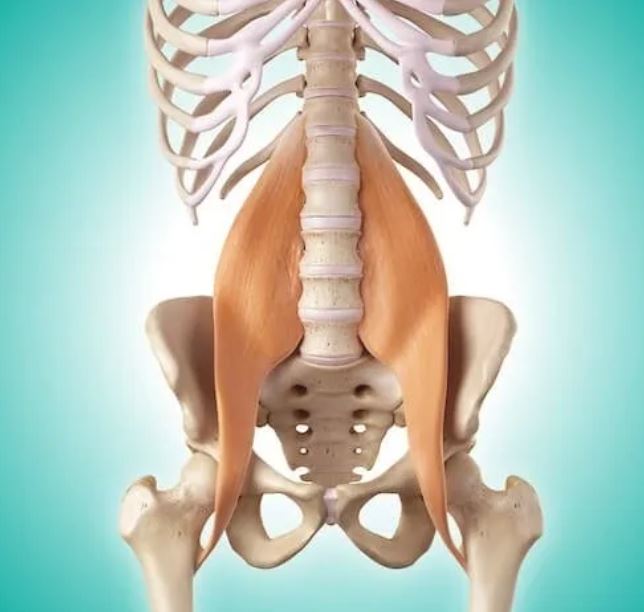|
The psoas major connects the spine to the legs and impacts our posture, movement, balance and stability. The psoas minor works with it to connect our pelvis to the spine.
Together they are part of a larger group of muscles that includes the iliacus, the deepest hip flexor which when tight can tilt the pelvis forward and accentuate the curve in the spine. The psoas also has another important role: as a shelf supporting internal organs and pelvic floor. Contraction of the psoas can stimulate and massage the intestines, kidneys, liver, spleen, pancreas, bladder, stomach and reproductive organs. The aorta lies in a similar path to it so circulation and rhythms are affected by the psoas and it joins the diaphragm, our major breathing muscle, at the solar plexus which houses a nerve network. It’s even believed that a chronically tightened psoas continually signals your body that you’re in danger, eventually exhausting the adrenal glands and depleting the immune system. So the psoas affects the whole person! When we spend a lot of time sitting, the psoas is shortened and needs to lengthen and open to counteract sitting hip flexion. Emotional responses, which are impulses from the central nervous system, contribute to muscle tension and affect the psoas. When it's stretched and released, emotions like fear and anxiety can surface and let go, restoring the balance we need to function healthily. Many of the stretches we do during an assisted stretch session actually engage and stimulate as well as stretch the iliopsoas and the psoas muscles. Not only the hip flexor stretch but the hip opener, glute stretch, quad stretch, spinal twists, forward bends, even the hamstring stretches work on this integral group of muscles. That’s why you feel so different after a stretch both emotionally and physically.
0 Comments
Leave a Reply. |
MargieI'm Margie, the owner of A Good Stretch. I love helping you feel good! Archives
April 2024
Categories |
Photo from shixart1985


 RSS Feed
RSS Feed
